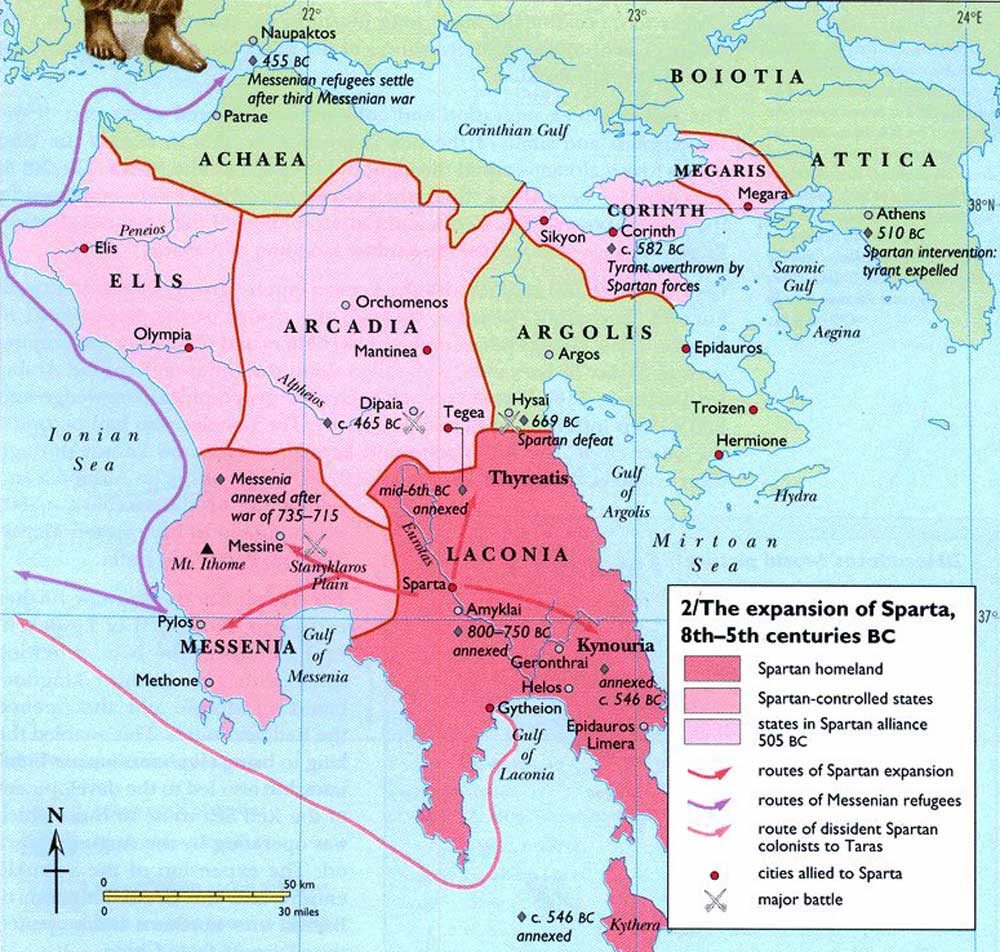Also called Lacedaemon (Lakedaim˘n). The capital of Laconica and the chief city of the Peloponnesus, was situated on the right bank of the Eurotas (Iri), about twenty miles from the sea. It stood on a plain which contained within it several rising grounds and hills. It was bounded on the east by the Eurotas, on the northwest by the small river Oenus (Kelesina), and on the southeast by the small river Tisia (Magula), both of which streams fell into the Eurotas. The plain in which Sparta stood was shut in on the east by Mount Menela´eum, and on the west by Mount Ta getus; whence the city is called by Homer "the hollow Lacedaemon." It was of a circular form, about six miles in circumference, and consisted of several distinct quarters, which were originally separate villages, and which were never united into one regular town. Its site is occupied by the modern villages of Magula and Psykhiko; and the principal modern town in the neighbourhood is Mistra, which lies about two miles to the west on Mount Ta getus.During the flourishing times of Greek independence, Sparta was never surrounded by walls, since the bravery of its citizens, and the difficulty of access to it, were supposed to render such defences needless. It was first fortified by the tyrant Nabis; but it did not possess regular walls until the time of the Romans. Sparta, unlike most Greek cities, had no proper Acropolis, but this name was given to one of the steepest hills of the town, on the summit of which stood the Temple of AthenÚ Poliuchus, or Chalcioecus.
Five distinct quarters of the city are mentioned: (1) PitanÚ (Pitanŕ), which appears to have been the most important part of the city, and in which was situated the Agora, containing the council-house of the Senate, and the offices of the public magistrates. It was also surrounded by various temples and other public buildings. Of these, the most splendid was the Persian Stoa or portico, originally built of the spoils taken in the Persian War, and enlarged and adorned at later times. A part of the Agora was called the Chorus or dancing-place, in which the Spartan youths performed dances in honour of Apollo. (Harpers Dictionary of Classical Antiquities, 1898)
